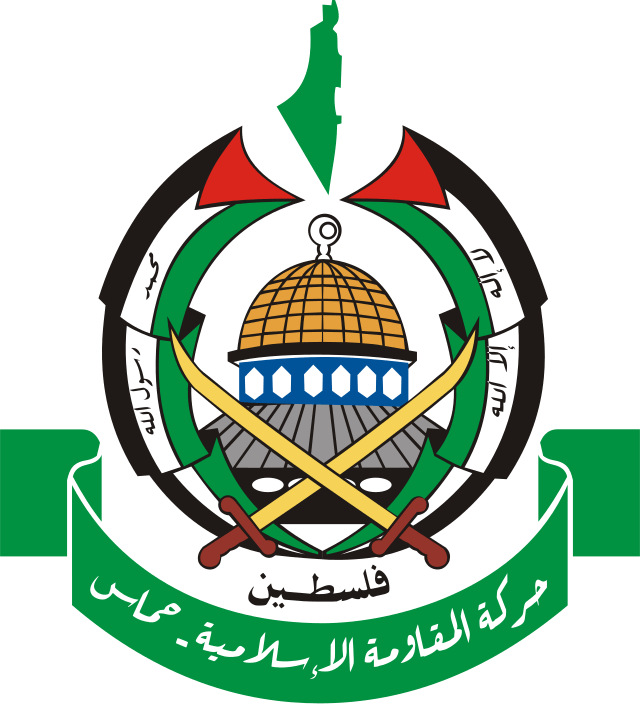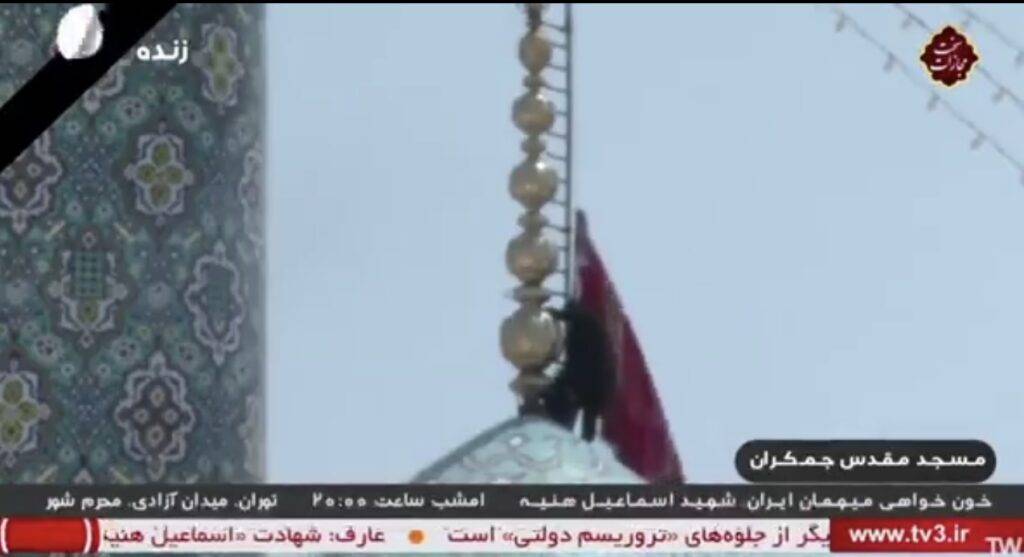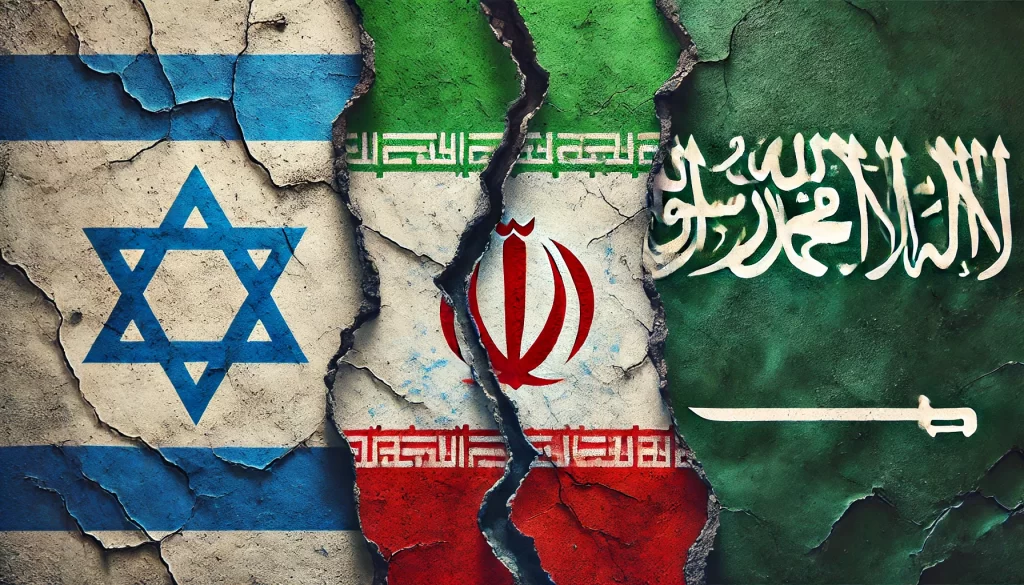Iran is reshaping its military strategy to counter adversaries and extend its power beyond its borders. Its allies—Hamas, Hezbollah, and the Houthis—have kept Israel occupied. But after the assassination of the Hamas leader in Tehran, Iran is now openly contemplating its own attack, while driving a wedge between the potentially warming ties between Israel and Saudi Arabia. What was Iran’s role in the Hamas assault on Israel outside Gaza?
Iran has rejected Western demands to refrain from retaliating against Israel following the assassination of Hamas leader Ismail Haniyeh in Tehran last month. Israel now reportedly believes that Iran is planning to launch an attack soon.

Iran’s use of proxy forces across the Middle East is a central pillar of its asymmetric strategy. The Quds Force, a branch of the IRGC, follows its with its Triple H Strategy and coordinates with various militant groups, including Hamas in Palestine, Hezbollah in Lebanon, the Houthis in Yemen, and militia groups in Iraq and Syria—known as. These proxies enable Iran to exert influence and project power across the region without direct confrontation with state adversaries.
Support for these groups includes the provision of advanced weaponry, training, and financial assistance. This network of allies allows Iran to maintain strategic depth and engage in hybrid warfare, complicating the military calculations of its opponents.
Iran’s strategic focus on Israel is driven by ideological, political, and security considerations. Viewing Israel as a primary adversary, Iran consistently seeks to undermine its security through both direct and indirect means. This includes supporting militant groups like Hamas and Hezbollah, which share Iran’s ideological goals and offer strategic leverage against Israel.

Northern Front: Hezbollah
Hezbollah, a Lebanese militant group and political party, is a major beneficiary of Iranian support. The group has built a significant arsenal of rockets and missiles, many supplied by Iran, including precision-guided munitions capable of striking deep into Israeli territory. This arsenal, estimated to include around 150,000 rockets and missiles, poses a substantial threat to Israel, giving Iran a powerful proxy on Israel’s northern border. Reports indicate that a significant portion of these weapons can reach targets several hundred kilometers from Lebanon. To assert its power, Hezbollah launched 200 rockets into Israel after its commander was killed in the summer of 2024.
Hezbollah’s influence extends beyond its military might; it acts as a conduit for Iranian influence in Lebanon and the broader region. Its involvement in the Syrian Civil War alongside Iranian and Syrian government forces has further cemented its strategic partnership with Tehran. Analysts believe Israel will eventually have to confront both Hezbollah’s rocket arsenal and its 30,000-strong militia, which presents a significant risk of drawing Israel into a conflict that both Israelis and Lebanese would prefer to avoid.

Southern Front: Hamas
In Gaza, Hamas has received financial support, weapons, and training from Iran, enabling it to continue its armed struggle against Israel. Hamas’s rocket attacks and tunnel warfare tactics are designed to destabilize southern Israel and provoke substantial military responses. Iran’s support for Hamas serves to maintain a proxy capable of engaging Israel in the south, while also stretching Israel’s military resources, which could otherwise be focused on Hezbollah in the north. This multi-front strategy aims to overextend Israel’s defenses and create exploitable vulnerabilities in broader regional conflicts. The October 7 Hamas massacre mirrored Hezbollah’s tactics. The Israeli military had long prepared to counter a Hezbollah strategy designed to overrun Israeli communities, kill and kidnap civilians, and undermine Israel’s security. The shock of the attack was that it occurred on the southern border rather than the northern one.
Saudi-Iranian-Israeli Relations Triangle: The Enemy of My Enemy Is My Friend
The Abraham Accords, which normalized relations between Israel and several Arab states, including the UAE and Bahrain, reflect a broader realignment in the Middle East, driven in part by shared concerns over Iran’s regional ambitions. While not officially part of the Accords, Saudi Arabia has shown tacit support, indicating a shift in its traditional stance towards Israel.
Saudi Arabia and Iran have historically been on opposing sides of regional conflicts, from the Iran-Iraq War in the 1980s to the more recent proxy wars in Yemen and Syria. This rivalry, fueled by sectarian differences—with Saudi Arabia championing Sunni interests and Iran supporting Shia groups—has often manifested as geopolitical competition, with both nations seeking to expand their influence at the other’s expense.
Despite this long-standing animosity, there have been recent signs of a possible rapprochement between Saudi Arabia and Iran. The reestablishment of diplomatic channels and dialogue on regional security issues suggests a willingness to explore areas of mutual interest.
Saudi Arabia’s shift in approach has broader geopolitical factors, including the need to focus on economic reforms under Vision 2030 and the changing dynamics of U.S. involvement in the Middle East. As the U.S. pivots towards Asia and reduces its direct military presence in the region, Saudi Arabia has had to reassess its security strategy. Cautious engagement with Iran may be seen as a way to mitigate potential threats and reduce the risk of direct conflict.
Gaza Cooled Israeli–Saudi Connection
In the years leading up to the Gaza war, Israel and Saudi Arabia had been moving towards a historic rapprochement. Though the two nations had no formal diplomatic ties, covert cooperation, and mutual interests, particularly in countering Iranian influence, brought them closer together. The prospect of formalizing these relations, which would mark a monumental shift in Middle Eastern diplomacy, seemed within reach.
As the custodian of Islam’s two holiest sites, Saudi Arabia has always approached normalization with Israel cautiously, aware of the potential backlash from both domestic and regional actors. Nonetheless, the pragmatic leadership in Riyadh appeared willing to explore closer ties with Israel, seeing it as a strategic partner against their common adversary, Iran.
However, the outbreak of violence in Gaza has complicated this diplomatic trajectory. The war, marked by widespread destruction and significant loss of life, has reignited the Palestinian issue—a matter of deep concern for the Saudi public and the wider Arab world. Riyadh, aware of the sensitivities involved, has had to recalibrate its stance. While still interested in the broader regional stability that could result from relations with Israel, the Saudi government has publicly condemned the violence and called for an end to hostilities.
The heavy Israeli military campaign in Gaza in response to the Hamas attack has further strained the nascent ties. Saudi Arabia, along with other Arab nations, has been vocal in its criticism of Israel’s actions, reflecting a broader regional backlash. While the possibility of normalization remains, it has certainly been pushed into more uncertain territory.
Remaining a Force Against a Regional Peace

Iran raised a red flag over the Qom mosque after the killing of Hamas leader Ismail Haniyeh in Tehran. The red flag is said to symbolize the blood spilled unjustly and as a call to avenge a person who is slain.
Iran’s steadfast support for Hamas takes on greater significance when considering the potential warming of Israeli-Saudi relations. For Tehran, the prospect of Saudi Arabia, a leading Sunni power, formalizing ties with Israel posed a strategic threat. Iran, which has long positioned itself as a champion of the Palestinian cause and an adversary of Israel, saw these developments as potentially isolating it further in the region.
The timing and scale of the Hamas attack have led many analysts to speculate that while Iran may not have directly orchestrated the assault, it likely had a role in its planning or at least provided tacit support. By enabling Hamas to carry out such a devastating operation, Iran could effectively disrupt the Israeli-Saudi rapprochement, preserving its influence in the region. The resulting conflict has indeed slowed, if not entirely halted, the momentum towards normalization.
As the conflict unfolds, the long-term impact on Israeli-Saudi relations remains uncertain. Both nations have compelling strategic reasons to pursue closer ties, particularly in countering Iran. However, the immediate aftermath of the Gaza war has made any public moves toward normalization highly sensitive and politically challenging. Saudi Arabia will likely continue to weigh its options, balancing domestic and regional pressures against its broader strategic interests.
For Iran, the conflict has achieved its goal of stalling the Israeli-Saudi rapprochement and reaffirming its role as a key player in the Palestinian issue. Yet, this may prove to be a short-lived victory. Once the dust settles, the underlying strategic calculus that initially brought Israel and Saudi Arabia closer may reassert itself, especially if both nations continue to perceive Iran as a growing threat.
Read More:
- The Times of Israel: In reversal, Israel said to now believe Iran plans to attack in next few days
- BBC: Iran rejects Western calls to refrain from attack on Israel
- CRS Reports: Iran: Background and U.S. Policy
- NPR: What Iran’s military strategy can tell us about the war
- European Council: Iran – Council broadens EU restrictive measures in view of Iran military support of Russia’s war of aggression against Ukraine and armed groups in the Middle East and Red Sea region
- IISS: Iran and Israel: everything short of war
- AEI: The Emerging Iranian Military Threat in the Middle East
- New York Times: A Look at Iran’s Military Capabilities
- Al Jazeera: Hezbollah fires 200 rockets into Israel after commander killed
- Haaretz: 150,000 Missiles Aimed at Israel: How Far Does Hezbollah’s Deadly Arsenal Reach
- Los Angeles Times: Opinion: Hezbollah’s deadly rockets aren’t the most serious threat to Israel’s northern border
- CSIS: Latest Analysis: Israel-Hamas War
- DW: Arab nations in Hamas-Israel conflict: What you need to know
- RUSI: In Gaza’s Shadow: The Middle East in 2024
- CSIS: Examining Extremism: Hezbollah



